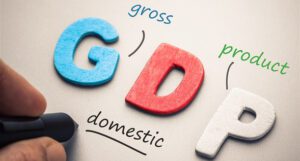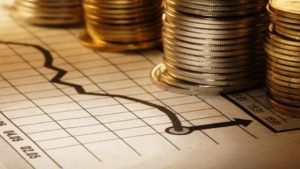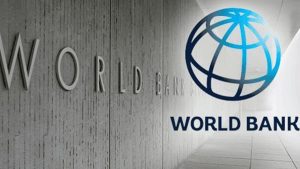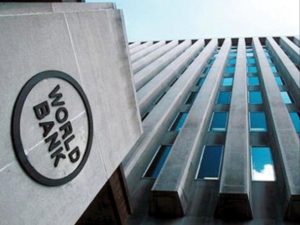
Concorde Capital investment company expects the Ukrainian economy to grow by 4.1% in 2021 with inflation of 8% and an average annual rate of UAH 27.60/$1, according to the company’s updated macroeconomic forecast publon Tuesday.
According to the forecast, at the end of the year the exchange rate will be about UAH 28.20/$1, the current account balance will remain positive – $0.5 billion and reserves will grow to $30.5 billion.
Concorde Capital estimates that GDP fell by 2.7% in the first quarter.
The company also said that the revaluation of the hryvnia stopped due to the increased risk of renewed military aggression, and the same risk led to a further weakening of nonresidents’ interest in the Ukrainian debt market.
Concorde Capital estimates the total need of the state budget for financing at $11.8 billion, of which $4.4 billion will be raised in the domestic market via government bonds, $1.8-4.6 billion from international financial institutions, which forces the country to look for another $5.5-2.8 billion elsewhere.
The company said that as of April 19, net attraction in the government bond market amounted to only UAH 6 billion, although last year the result was even worse – minus UAH 3 billion.
Concorde Capital expects growth to slow down to 3.5% next year, while inflation will drop to 5.5%.

Ukraine’s economy after falling by 5.1% in 2020 will grow by 4% this year, with a slight increase in inflation (December from December) from 5% to 5.8% -6%, Citi analysts stated in the forecast of the global economy.
In their opinion, consumer spending will become the key growth driver against the backdrop of a planned 30% increase in the minimum wage from UAH 5,000 to UAH 6,500.
The experts expect the economy to recover to pre-crisis levels in the first quarter of 2022, generally assessing growth prospects in 2022 at 3% with inflation falling to 5.3%.
The bank forecasts that the National Bank will increase the refinancing rate by 50 b.p. in the second quarter of 2021, to 6.5% in order to balance price pressure caused by the rise in inflation. In particular, Citi expects the consumer price index to rise to 5.8% by the end of 2021.
According to the survey, the analysts predict the weakening of the hryvnia exchange rate by the end of this year to UAH 29.47/$1 with an average annual value of UAH 28.92/$1, and in the next year to UAH 30.67/$1 and 30.12 UAH/$1, respectively.
The analysts noted the institutional regression that occurred in 2020, but they are inclined to believe that the need to finance a large budget deficit will be an incentive for Ukrainian authorities to continue cooperation with the IMF. In their opinion, ensuring the independence of the National Bank and finding a way out of the situation that arose after the Constitutional Court had recognized a number of anti-corruption norms as unconstitutional will be of decisive importance.

The National Bank of Ukraine (NBU) expects an actual budget deficit in 2020 at the level of 6-6.5% of GDP instead of the 7.5% foreseen in the forecast, Deputy Governor of the NBU Dmytro Sologub has said.
“This year’s budget deficit is set at 7.5% of GDP. This is absolutely correct from the countercyclical point of view. But, apparently, the actual deficit will be lower… We estimate that the budget deficit will be around 6 -6.5% of GDP,” he said in an interview with Interfax-Ukraine.
According to him, the budget deficit fell below the forecast due to the strong underfunding of existing expenses. “Catching up on them in recent months will not be easy given the funding opportunities,” he said.

The Ministry for Development of Economy, Trade and Agriculture of Ukraine predicts growth of GDP in 2021 at 4.6% with inflation of 7.3%, according to a draft resolution put on the agenda of the Wednesday government meeting.
According to the document, in 2022, GDP would grow by 4.3% with inflation of 6.2%.
According to the draft resolution, export growth is expected 2.9% next year and 6.4% in 2022, while import growth is projected at 10.6% and 10%, respectively.
The trade deficit will amount to $10.4 billion in 2021 and $13.6 billion in 2022, the ministry said.

Ukraine’s economy will shrink by 3.5% in 2020 due to the coronavirus-related crisis, while the global economy will lose 5.2% overall, the World Bank announced this in the updated Global Economic Prospects on Tuesday. “The depth of the contraction will depend on the duration of the health crisis, progress on major pending reforms, and the ability to mobilize adequate financing to meet sizable repayment needs,” the World Bank said.
According to the bank, next year the growth of the Ukrainian economy will resume at a rate of 3%, which is lower than the expected recovery of the global economy at 4.2%.
The World Bank said that compared with the previous forecast in January of this year, it worsened expectations of the dynamics of Ukraine’s GDP this year by 7.2 percentage points (pp), and in the next – by 1.2 pp.

The World Bank has improved the forecast for Ukraine’s GDP growth in 2019 from 3.4% to 3.6%, World Bank Senior Economist Anastasia Golovach has said.
“For 2019, we do not expect any surprises and we think that Ukraine’s GDP will grow by 3.6%. A good indicator, but external risks, in some way, are increasing for Ukraine, so the structural transformation of the economy is important,” she said at a press conference in Kyiv on Tuesday.
She noted that maintaining the current rate of economic growth will require an increase in capital investment, which amounted to 10% last year. This will require a greater influx of foreign direct investment.
At the same time, the bank kept forecasts of economic growth in 2020 at 3.7% of GDP, in 2021 at 4.2%, she said.
According to the banker, the deficit of the balance of payments in Ukraine in 2019 is expected to reach 3.1% of GDP, however, due to the potential loss of gas transit revenues and the unfavorable situation in the world markets, this figure will increase in 2020 and 2021 to 3.6% and 3.8% of GDP.
“But subject to rapid reforms, we expect in the next month that Ukraine will be able to maintain the economic growth rate at 3.7% in 2020 and accelerate it to 4.2% in 2021,” Golovach explained.
“An important factor in reducing pressure on the budget deficit is control over current budget expenditures and a balanced reduction in the minimum wage this year – only at the level of 12%, which is very contrasted with the previous years,” Golovach said.
Moreover, according to her, inflation will continue the downward trend: from 9.8% at the end of last year to 6.4% by the end of this year, as well as 5.5% and 5% in 2020 and 2021 respectively.
According to the bank’s expectations, in 2019 the deficit of the national budget of Ukraine will show a decrease to 2.1% in 2020 and 1.9% in 2021.
The World Bank believes that the level of public debt of Ukraine will also continue to decline this year to 51.7% of GDP. At the same time, the bank maintained the forecast for its further growth in 2020 and in 2021 to 54.6% and 55.3% of GDP respectively.